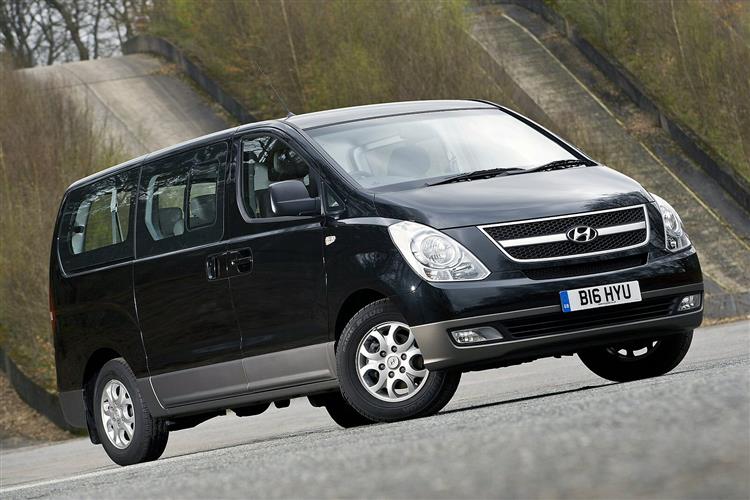This is a sample, showing 30 seconds of each section.
AFTER EIGHT? (some text hidden) SECTIONED_new_hyundaii800_2011
By Andy Enright
Introductionword count: 206
It's said that when it comes to engines, there's no substitute for cubes. You could say the same thing about MPVs as well, Manufacturers pull all the clever stunts they can with folding seats, cubby holes in unlikely places and repositioning items like fuel tanks but when all's said and done, sheer size counts for a lot. And People Carriers don't come with much more sheer size than Hyundai's i800. Why? Because, not to put to fine a point on it, the i800 is a van with windows and eight seats. While that doesn't at first seem the most promising start for a passenger vehicle, it's one that has and continues to work very well in many markets. We're a bit sniffy about commercial-based vehicles in this country, but it's a different story in Europe where, for example, Mercedes-Benz doesn't employ anything like the subterfuge it does here to disguise the fact that its Vianos were always marketed by its commercial vehicles arm. Hyundai always sold this i800 as a car and if you're able to see it that way, then you'll surely agree that it scores well in terms of sheer practicality. But does it make the grade as a used buy? Find out here.
Modelsword count: 6
5 dr MPV (2.5 diesel [Style])
Historyword count: 108
First introduced in 2008, the i800 instantly carved a niche for itself as a way to carry eight people and luggage in a car that costing less than £20,000. The 170PS 2.5-litre turbodiesel under the bonnet delivered more than enough torque for the job in hand and was joined by a 134PS unit of identical capacity that was teamed with a manual gearbox. This model was briefly deleted from the Korean company's line-up in 2014, then reinstated and facelifted in 2017. From then, the i800 continued to sell in steady numbers with very little in the way of mechanical or cosmetic update until it was discontinued in 2019.
What You Getword count: 227
Park the Hyundai i800 outside your neighbours' house and you may well have them googling their claims to 'Right to Light'. It's a big unit, the 5125mm length making it longer than a Mercedes S-Class and the 1925mm height making it taller than Rio Ferdinand in stockinged feet. While it's not going to win any beauty prizes, that blockhouse shape is undeniably the most efficient way of maximising internal space. That eternal quandary that faces most MPV owners (namely that when they've loaded the vehicle with passengers, there's nowhere to put the bags) just doesn't apply with the i800. Even with eight up, there's a 581-litre luggage bay - almost twice as much as some estate cars. The car features a pair seats in front and two benches behind, each accommodating three adults in comfort with uncompromised head and legroom. Both rear benches feature a 60:40 split-fold and recline, while the centre row also slides forwards or backwards to tailor space as required. All of the rear seats are accessed by pair of sliding doors, making access easy wherever the i800 is parked. Once inside, the ambience is far more car-like than other 'minibus' style rivals, with two-tone interior trim, privacy glass, a six-speaker audio system and ducted air conditioning throughout. Individually-controllable overhead vents in the rear make sure all of the occupants can keep their cool.
To see the full road test text contact us on 0330 0020 227
Pictures (high res disabled)

Scoring (subset of scores)
Category: MPV People Carriers
| Performance | |
| Handling | |
| Comfort | |
| Space | |
| Styling, Build, Value, Equipment, Depreciation, Handling, Insurance and Total scores are available with our full data feed. | |



